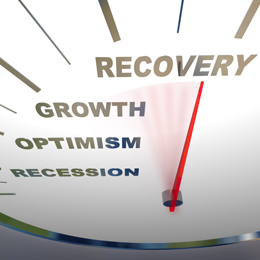 One of the things I try to keep in mind is the possibility I might be wrong. (Hard to believe, I know, but stranger things have happened.)
One of the things I try to keep in mind is the possibility I might be wrong. (Hard to believe, I know, but stranger things have happened.)
Although I remain convinced the economy will continue to grow—and that weather and other transitory factors contributed to the lackluster first quarter—the continuing stream of weak economic reports at least suggests the opposite is also possible.
In the spirit of Keynes’s quote “When the facts change, I change my mind,” let’s take a look at some of the stats I cover in my monthly risk factor update. To me, these are the best and most consistent warning signs of an economic slowdown ahead.
Employment
You often hear that consumer spending is two-thirds of the economy; wage income, which comes from jobs, is the bulk of that. In my monthly update, I track private employment, both annually and monthly, based on the fact that jobs are the economy, in a very real sense. By looking at changes over time, you can see the underlying trends in the broader economy, which will eventually show up in the other numbers.
If monthly job growth were to drop below zero, that would be a worrying sign. And if annual job growth should fall below zero, it would signal a pending recession. Right now, though, despite a bad March jobs report, both of these figures are strongly positive.
The service sector
Jobs are a great indicator, but a trailing one. Ideally, we would have some way of looking forward at what business is planning to do over the next several months. The ISM surveys are very good at that, and the ISM service sector index is most relevant to the domestic economy.
The way the index is constructed, any reading above 50 means the economy is expanding. The fact that we’re well above that point right now—at about the highest level since the crisis and consistent with the mid-2000s—indicates that a move below 50 (and any corresponding change in my thinking) is probably some time off.
The yield curve
The yield curve is the difference between the 10-year and 3-month U.S. government bond interest rates. When it approaches zero (when long- and short-term rates are the same), the economy is in trouble.
Despite all the speculation about when the Fed will raise short-term rates, we’re clearly above the trouble level, with no immediate prospect of any change. Right now, the Fed remains firmly in stimulus mode. Should short-term rates rise significantly, or long-term rates drop, it would be grounds for potentially changing my mind.
Consumer confidence
Even if people are making money at their jobs, they have to be confident about the future to spend it. Rising consumer confidence reflects stability at a high level, indicating that people will spend more, and the economy will grow faster.
Historically, it has taken a drop in consumer confidence of about 20 percent over the preceding year to signal trouble ahead—and as of right now, we still see increases. Should consumer confidence growth go flat, it would be worth a look; should it actually start to decline on a year-to-year basis, that might well indicate trouble.
There are, of course, other ways of evaluating consumer and business expectations and behavior, and I will discuss those in the next post. In the meantime, though, I’ll continue to evaluate all of the signals discussed above so that, if it does come time to change my mind, I’ll be ready.


 Print
Print

